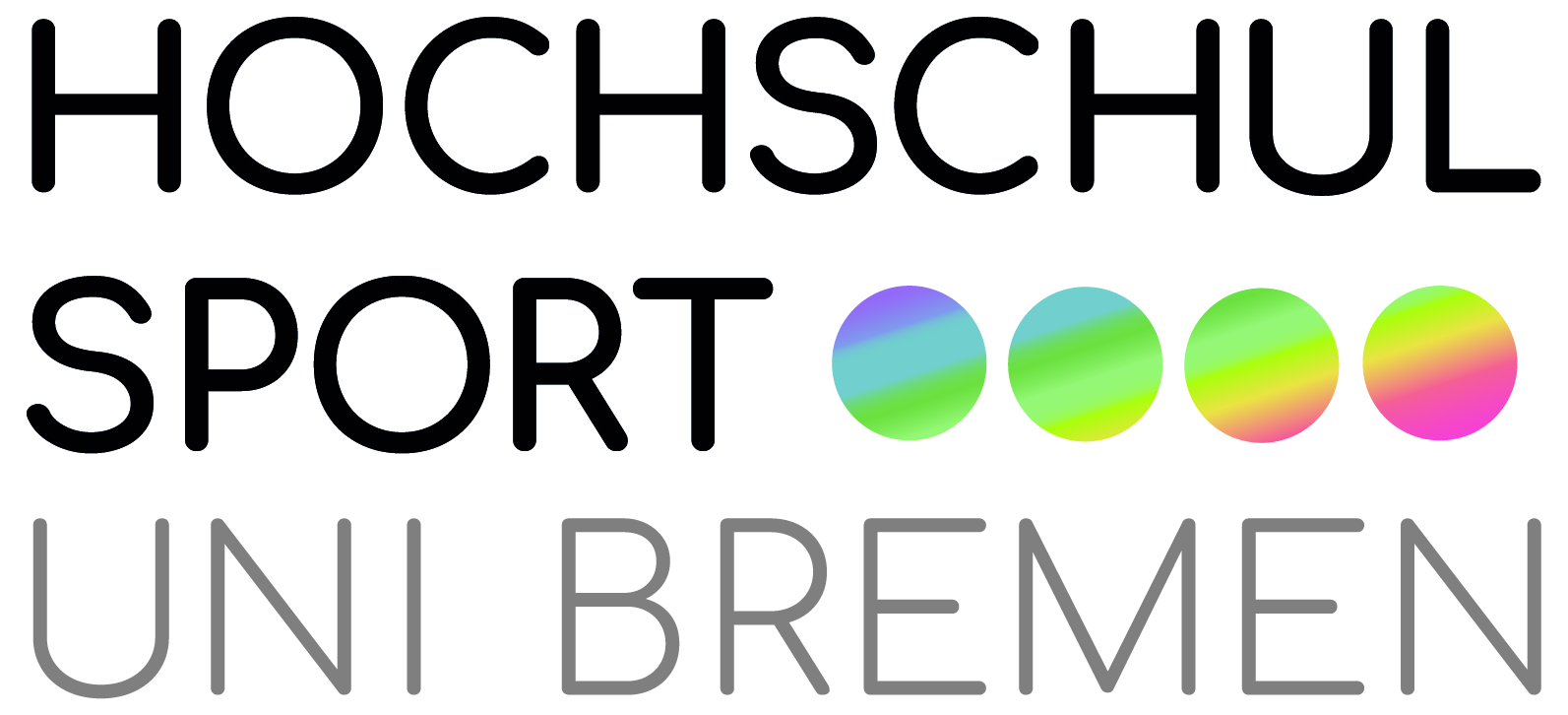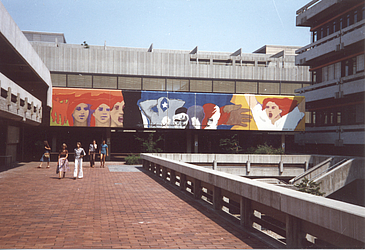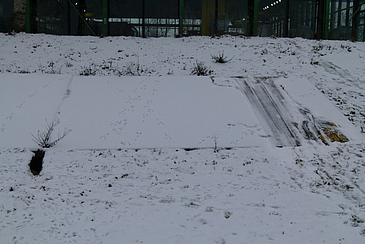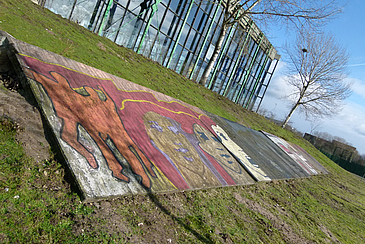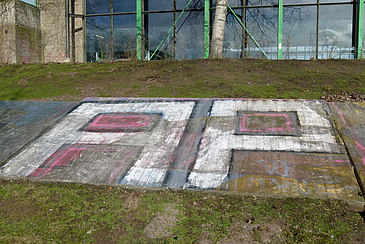Lying on a small wall located between the Uni-Bad swimming pool and the SFG building you can find a heap of large painted concrete slabs. The colors on the 21 x 3 meter-large slabs are badly faded, and the motif is hardly recognizable. This springtime, though, the artwork is to be returned to its former condition. What do the paintings depict? What is their significance for the University? “To fully appreciate that, you must know something about their history”, says Sigrid Dauks who heads the University archives and belongs to a group of people who want to see the paintings restored.
The military coup in Chile
This history begins in Chile: In the wake of the military putsch against the socialist government in 1973, members of the Chilean opposition and its sympathizers were systematically arrested, tortured, and very often murdered. Bremen was quick to announce its solidarity with the victims of the military junta, and several exiled Chilean scholars found refuge at the University of Bremen. The three wall paintings that make up the mural were created in June 1976 by art students of the University and an exiled group of Chilean artists calling themselves “Brigade Luis Corvalan”. This was the first of the group’s work to be put on public display in Germany. The slabs lying in front of the Uni-Bad are what remain of the mural.
Memorial against fascism
The sequence of paintings depicts the Chilean people’s fateful precipitation from democracy to fascism. Suppression and terror were the result: The picture of a Jewish boy in the Warsaw Ghetto recalls the evils of German fascism. The motif of the third passage illustrates the opposition’s call to resistance: a pleading hand stretches out to a rallying female figure.
Until 1997, the mural hung at a height of 25 meters from a prominent position along the Uni-Boulevard between buildings GW2, MZH and the former Studentenhaus. After serving as a dramatic visible memorial against fascism for 21 years, the slabs were removed during construction work and moved to their present location.
A piece of University history survives
In his film “Von Marx zu Darwin: Universität Bremen – eine Zeitreise” [From Marx to Darwin: University of Bremen – a journey through time], Professor Michael Müller (Cultural Studies) refers to the mural as a “powerful example of collective remembrance”. It was the first politically motivated artwork to be put on public display at the University of Bremen, and it bears witness to the prevailing mood during the 1970s. Sigrid Dauks attests: “The mural is symbolic for the feeling of support and solidarity with Chilean exiles shared not only by the University but also by a large part of Bremen polity and civil society.”
Today, 37 years after the mural first appeared at the University, the mural is neglected and has fallen into disrepair, although the University archive has made continued attempts to have it restored. Now the foundation “Wohnliche Stadt” has granted 20,000 euros for restoration work. Yet, how this is to be implemented remains unclear: once restored, in its present location the restored artwork would not last very long. Any other site would entail a large area being made available and a large load-bearing pedestal. This fall marks the 40th anniversary of the military putsch. Many people feel the time is opportune for such a demonstrative piece of University history as the mural to once again inject color and emotion into campus life.

